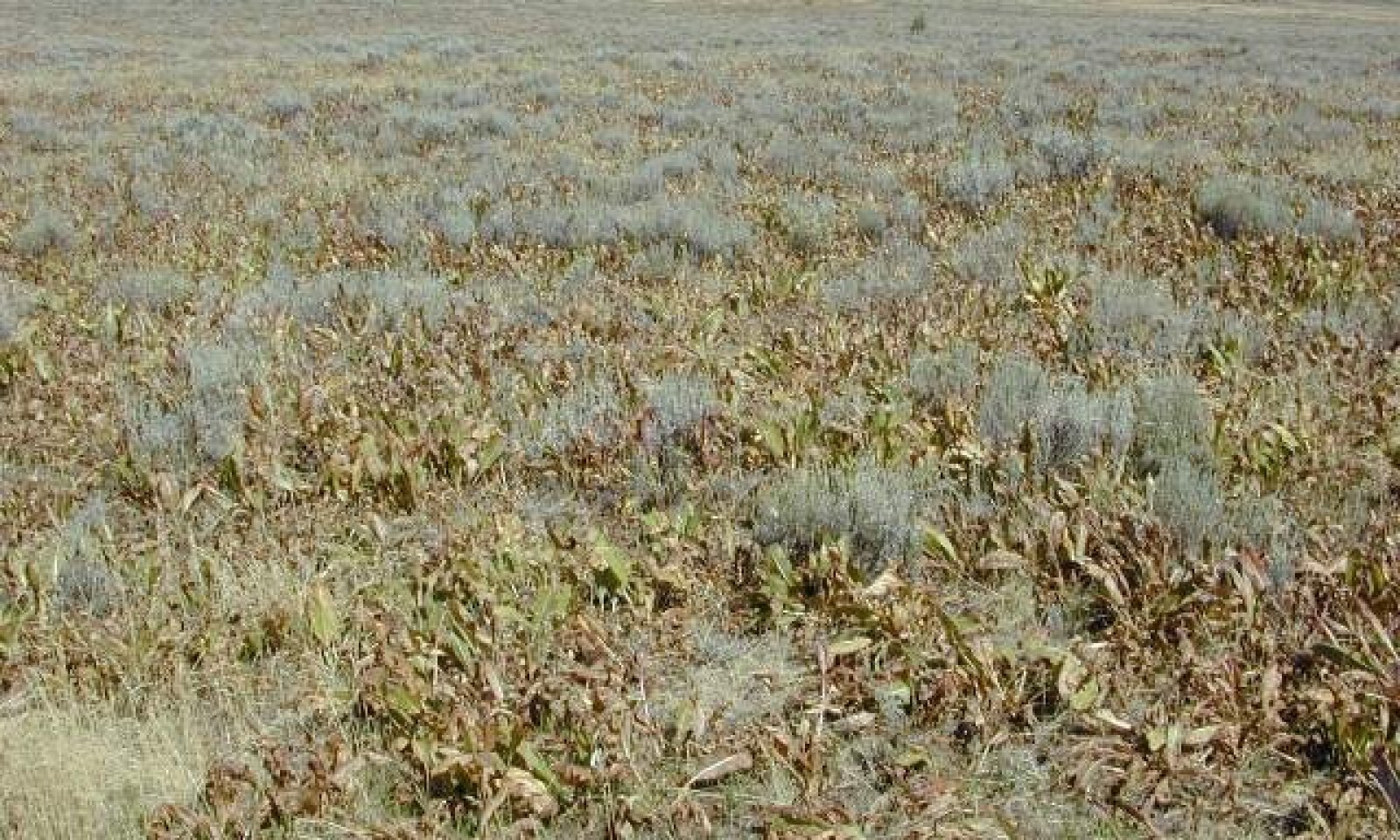
High Mountain Clay (slender wheatgrass)
Scenario model
Current ecosystem state
Select a state
Management practices/drivers
Select a transition or restoration pathway
-
Transition T1a
introduction of exotic species
More details -
Transition T2a
Mechanical disturbance of woody species and continued heavy livestock grazing during the growing-season
More details -
No transition or restoration pathway between the selected states has been described
Target ecosystem state
Select a state
Description
The Reference State is a description of this ecological site just prior to Euro-American settlement but long after the arrival of Native Americans. The description of the Reference State was determined by NRCS Soil Survey Type Site Location information and familiarity with rangeland relict areas where they exist. The least modified plant community would have been co-dominated by a mixture of grass and forb species (1.1), with slender wheatgrass (Elymus trachycaulus) and mule-ears (Wyethia amplexicaulis) as the primary species. A more complete list of species by lifeform for the Reference State is available in accompanying tables in the “Plant Community Composition by Weight and Percentage” section of this ESD document.
Submodel
Description
State 2 is a description of the ecological site shortly following Euro-American settlement, which has been influenced by the introduction of several non-native plants and animals, possible extinctions of native species, and a different climate. Historic heavy continuous season-long grazing by livestock and the prevention of wildfire also had a major impact on these sites creating a shrub steppe which should now be considered the present potential. Unpalatable species such as mule-ears and native woody species such as mountain snowberry, silver sagebrush (Artemisia cana), and low sagebrush increased while the palatable herbaceous species diminished.
Submodel
Description
With continued impacts from heavy livestock grazing and mechanical, herbicidal, or fire removal of native shrubs, the native grass component will markedly decrease or be absent, shrubs will also be reduced to absence, but perennial forbs and annual grasses such as mule-ears, tarweed , (Madia glomerata) and cheatgrass (Bromus tectorum) will increase.
Submodel
Mechanism
The simultaneous introduction of exotic species, both plants and animals, possible extinctions of native flora and fauna, climate change, the advent of heavy continuous season long livestock grazing, and fire prevention has caused State 1 to transition to State 2. Reversal of such historic changes (i.e. a return pathway) back to State 1 is not practical.
Mechanism
Mechanical disturbance of woody species and continued heavy livestock grazing during the growing-season of grasses will cause a transition from State 2 to a perennial forb and annual grass-dominated state (State 3). The churning clay soils naturally favor herbs over woody species, thus shrubs are a temporary occupier of such sites. However both the mechanical and herbivory of interzonal grazing can trigger the shrubs which are moderately palatable, especially to sheep. Mule-ears is however, unpalatable to all animals and its massive root structure allows it to prevail under all treatments except deep plowing and herbicides. Reducing livestock grazing has little effect on reducing its competitive hold. The only potential restoration pathway requires massive tillage with subsequent herbicide and re-seeding efforts to convert these sites to perennial grasslands.
Model keys
Briefcase
Add ecological sites and Major Land Resource Areas to your briefcase by clicking on the briefcase (![]() ) icon wherever it occurs. Drag and drop items to reorder. Cookies are used to store briefcase items between browsing sessions. Because of this, the number of items that can be added to your briefcase is limited, and briefcase items added on one device and browser cannot be accessed from another device or browser. Users who do not wish to place cookies on their devices should not use the briefcase tool. Briefcase cookies serve no other purpose than described here and are deleted whenever browsing history is cleared.
) icon wherever it occurs. Drag and drop items to reorder. Cookies are used to store briefcase items between browsing sessions. Because of this, the number of items that can be added to your briefcase is limited, and briefcase items added on one device and browser cannot be accessed from another device or browser. Users who do not wish to place cookies on their devices should not use the briefcase tool. Briefcase cookies serve no other purpose than described here and are deleted whenever browsing history is cleared.
Ecological sites
Major Land Resource Areas
The Ecosystem Dynamics Interpretive Tool is an information system framework developed by the USDA-ARS Jornada Experimental Range, USDA Natural Resources Conservation Service, and New Mexico State University.
